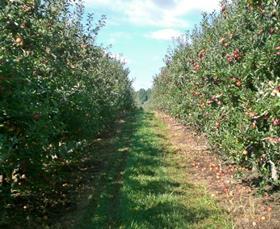
Brazil’s apple sector is focusing on Bangladesh and India this season, reveals Pierre Nicolas Pérès of Brazilian apple producers association ABPM and grower-shipper Pomagri.
A late frost and drought conditions during the growing season gave rise to a reduced crop of small-calibre fruit, which sell well in South Asian countries.
“Bangladesh and India have been our focus this year due to the facility to sell smaller fruits,” Pérès told Fruitnet. “Bangladesh is a good market for us because of the size of the fruits they take – up to 216. It is a price-driven market, but open to very small sizes.”
Fruit sizes are smaller this year in Gala and Fuji varieties due to adverse climatic conditions during the summer months, which also cut yields.
“In volume, we haven't yet the final number, but it will be around a 10 per cent reduction in Gala and around 25 per cent down in Fuji compared to last year,” Pérès said in May.
Brazilian apple sales to Asia and the Middle East are growing steadily year-on-year, according to Pérès. Exports to Asia (Bangladesh, Singapore, Philippines, Hong Kong, India, Indonesia, Pakistan, Thailand and Vietnam) are up 27 per cent so far this season compared to last, with an average 21 per cent rise over the last three years.
Shipments to the Middle East, meanwhile, are 3 per cent higher this season compared to last. And have averaged a 23 per cent rise over the last three years.
“Production costs are increasing – labour and materials – so producers have to add these costs to final prices,” said Pérès. “This pressure made us look at other markets that will accept our fruits for a higher price.”
The vagaries of market economies have also encouraged Brazilian grower-shippers to look outside traditional European markets in recent seasons.
“There is a need to diversify markets and not depend on only one market,” said Pérès. “This reduces exposure to economic difficulties. We are looking for new consumers in emerging countries with better purchasing power.”
For the moment Hong Kong is a niche market for Brazilian apples, which do not yet have the green light for direct exports to mainland China.
Elsewhere, Russia shows strong interest in Brazil’s apples, but, like the US, the market prefers larger sizes.
“Usually we have few large sizes, and it is worse this year,” Pérès said. “We will never be able to export large volumes of fruits in these two countries.”
Meanwhile, exports to Brazil’s traditional European markets in February started well thanks to a relatively clear distribution channels.
“It seems we will have a very good season in Europe in terms of demand,” said Pérès. “But the difficulties we have are the value of the real against the euro and dollar; and the inflation in production costs that oblige us to raise selling prices in order to cover the costs.
“Added to that, the concentration of smaller sizes was not good for Europe, which explains why the quantity exported to Europe this year will not be as big as it could be even with a good market.”
Brazil’s apple production is still largely devoted to Gala and Fuji, with some recent plantings of newer varieties, such as Mona Lisa, which is resistant to scab and other diseases.
“Like everywhere in the world, Brazil’s apple sector has to adapt to the economic reality: namely an increase in costs and mounting competition between growers,” said Pérès. “This obliges growers to seek better quality and better productivity to survive.
“We are seeing some grower consolidation, with bigger organisations becoming larger and partnering up with big supermarket chains.
Curiously at the same time there is a new generation of smaller producers, specialised in high-quality production, who give their crop to the bigger players for them to trade.”
Brazil’s apple acreage has stablised at around 38,500ha.






No comments yet